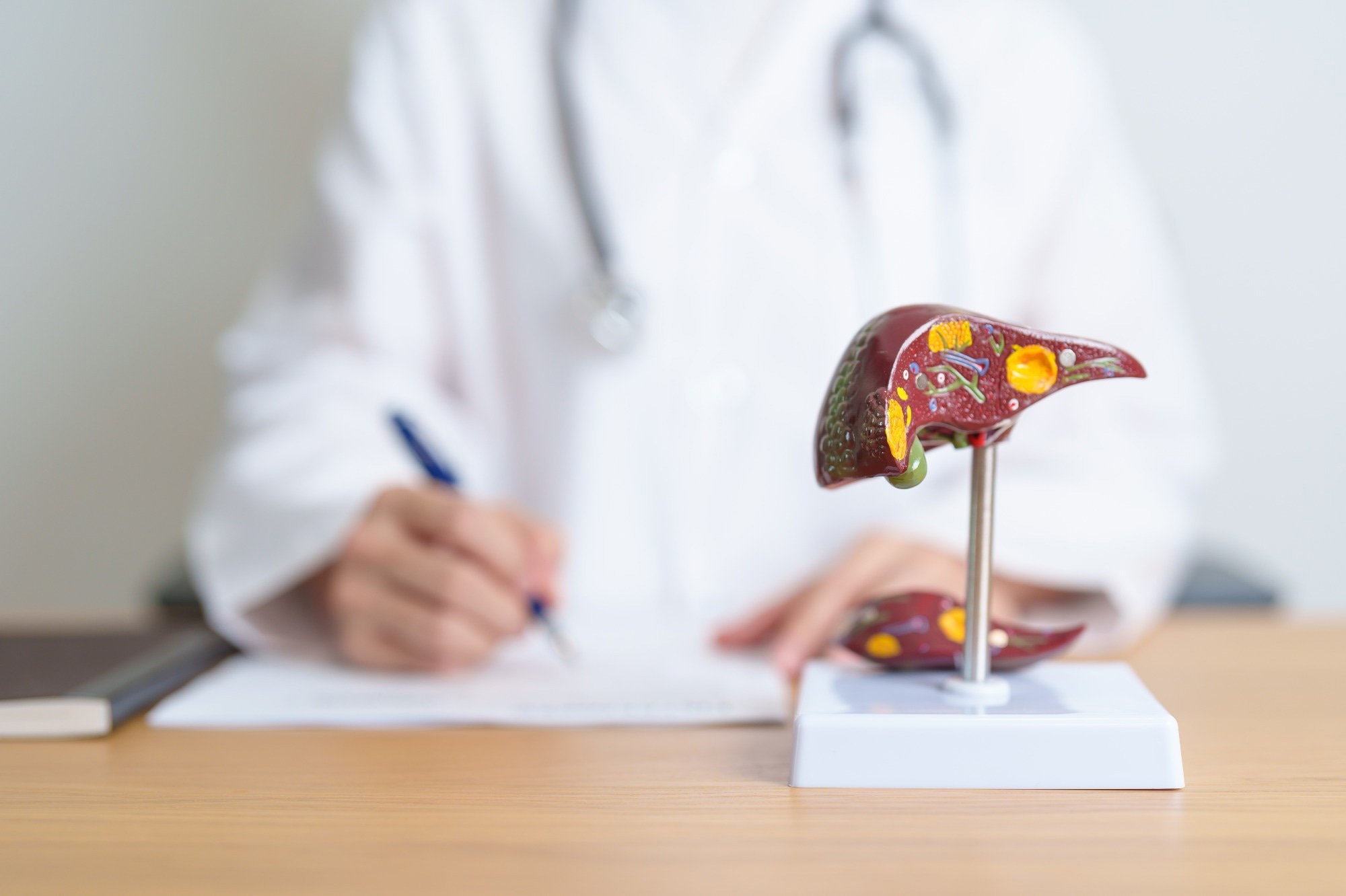In a recent study published in the journal Scientific Reports, researchers compare whether insulin- and non-insulin-based insulin resistance (IR) markers could predict the risk of non-alcoholic fatty liver disease (NAFLD) in obese and non-obese individuals with no history of diabetes or hepatitis.
 Study: Markers of insulin resistance associated with non-alcoholic fatty liver disease in non-diabetic population. Image Credit: Jo Panuwat D / Shutterstock.com
Study: Markers of insulin resistance associated with non-alcoholic fatty liver disease in non-diabetic population. Image Credit: Jo Panuwat D / Shutterstock.com
Background
Currently, liver biopsy, which is the gold standard diagnostic test for non-obese NAFLD, is invasive, while other methods, such as magnetic resonance imaging (MRI) and computed tomography (CT), are expensive. Although ultrasound imaging is relatively inexpensive, it is poorly sensitive to mild steatosis, and different physicians interpret its results differently. Overall, there is a shortage of appropriate diagnostic methods for detecting atypical non-obese NAFLD.
Previous studies have evaluated the association between IR markers and the risk of NAFLD; however, most have generated inconsistent results. Nevertheless, IR markers may assist in the early detection of NAFLD in non-obese patients with higher precision, given their association with liver fibrosis in NAFLD patients without diabetes.
About the study
In the present study, researchers recruited 2,148 subjects between 2021 and 2023 and collected information regarding their gender, age, as well as current and past medical and medication history. Based on computed body mass index (BMI), the study participants were categorized as non-obese or obese, with BMI values of less than 25 kg/m2 and exceeding 25 kg/m2, respectively.
Venous blood samples were collected after the study participants completed at least 10 hours of fasting. The levels of four non-insulin-based IR markers were assessed, which included homeostatic model assessment of IR (HOMA-IR), triglyceride-glucose (TyG) index, TyG index with BMI (TyG-BMI), and triglyceride/high-density lipoprotein cholesterol ratio (TG/HDL-c), as well as metabolic score for IR (METS-IR). The levels of these biomarkers were compared for their predictive ability for obese and non-obese NAFLD.
Logistic regression models were used to assess the relationship between IR markers and NAFLD risk. IR marker values were categorized into four quartiles of different variables.
The area under the curve (AUC) and receiver operating characteristic (ROC) values allowed the researchers to evaluate the predictive ability of IR markers for NAFLD. In contrast, the odds ratio (OR) and 95% confidence interval (CI) were used to quantify the correlation between IR markers and NAFLD risk. The statistical significance threshold was set at a p-value of less than 0.05.
Study findings
The NAFLD group had significantly elevated levels of fasting plasma glucose (FPG), uric acid (UA), TG, aminotransferase (AST), alanine aminotransferase (ALT), and gamma-glutamyl transpeptidase (GGT). Notably, the BMI of the obese and non-obese subgroups of the NAFLD group was also significantly higher.
The ORs for all five IR markers, including HOMA-IR, TyG, TyG-BMI, TG/HDL-c, and METS-IR, were markedly higher in the NAFLD group than in the non-NAFLD group. These levels often increased with increasing levels of quartiles in the overall study cohort, as well as among obese and non-obese subgroups.
In the non-obese subgroup, the AUC of TyG-BMI was the highest, thus suggesting that TyG-BMI has a better predictive value for NAFLD in non-diabetic and non-obese patients. Comparatively, in the obese subgroup, the AUC of HOMA-IR was the highest, which indicates that HOMA-IR is a better predictor for NAFLD in non-diabetic obese subjects. Moreover, the AUC of each IR marker was over 0.5 with p-values less than 0.05, thus indicating statistically significant and specific predictive values for NAFLD.
Conclusions
The study findings corroborate previous reports of IR markers associated with an increased risk of NAFLD. Thus, using TyG-BMI and HOMA-IR IR markers appear to be clinically relevant for diagnosing non-obese and obese NAFLD, respectively, as they were associated with better detection abilities than the other IR markers.
Although the researchers could not clarify the reason for this difference, they speculate that since TyG-BMI is calculated based on body fat distribution using FPG, TG, and BMI values, it has superior diagnostic value in non-obese individuals. Nevertheless, several studies also suggest that normal BMI in non-obese patients remains an independent risk factor for NAFLD.
Journal reference:
- Zeng, P., Cai, X., Yu, X., & Gong, L. (2023). Markers of insulin resistance associated with non-alcoholic fatty liver disease in non-diabetic population. Scientific Reports 13(1); 1-8. doi:10.1038/s41598-023-47269-4